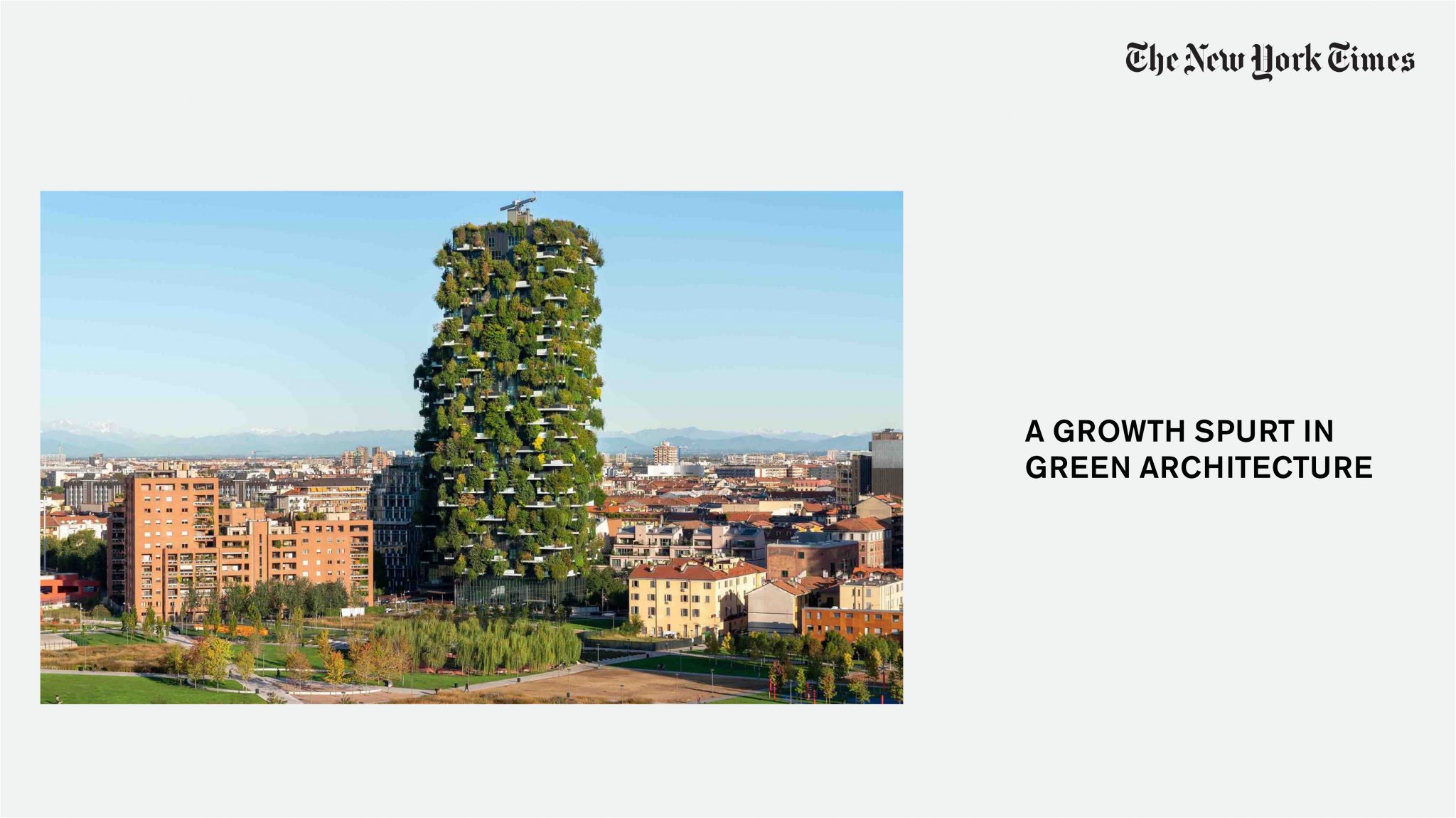
The New York Times publishes an article titled “A Growth Spurt in Green Architecture,” analyzing the phenomenon of green architecture and the incorporation of vegetation into contemporary projects, citing Boeri Studio’s Bosco Verticale as one of the examples of this integration.
According to the United Nations Environment Program, the construction industry is responsible for approximately 37% of global carbon dioxide emissions. Three of the most commonly used building materials – cement, steel, and aluminum – generate almost a quarter of all carbon emissions.
However, the article also highlights progress: the use of renewable organic materials such as wood, hemp, and bamboo is spreading. Plants and trees that absorb carbon are increasingly integrated into architectural design. Even concrete is shedding its stigma with the development of low-carbon varieties. Sustainability-minded architects are adopting these materials in buildings that are not only more environmentally friendly but also look different from the cement and steel boxes of modernism.
In this context, the Bosco Verticale fits in, built in Milan in 2014, hosting vegetation on its facades equivalent to that of 30,000 square meters of forest and underbrush, concentrated on 3,000 square meters of urban surface.
“What we have done is use plants not as ornamentation, but as a kind of biological skin. Green shades and cools, regulates humidity, and absorbs carbon dioxide and pollution. It also serves as a habitat for birds and insects and creates a direct and immediate connection between residents and nature,” declares Stefano Boeri.
To read the full article: https://www.nytimes.com/2024/03/06/realestate/architecture-natural-materials.html?unlocked_article_code=1.a00.sCQf.cL3KkyyIwFUc&smid=wa-share
